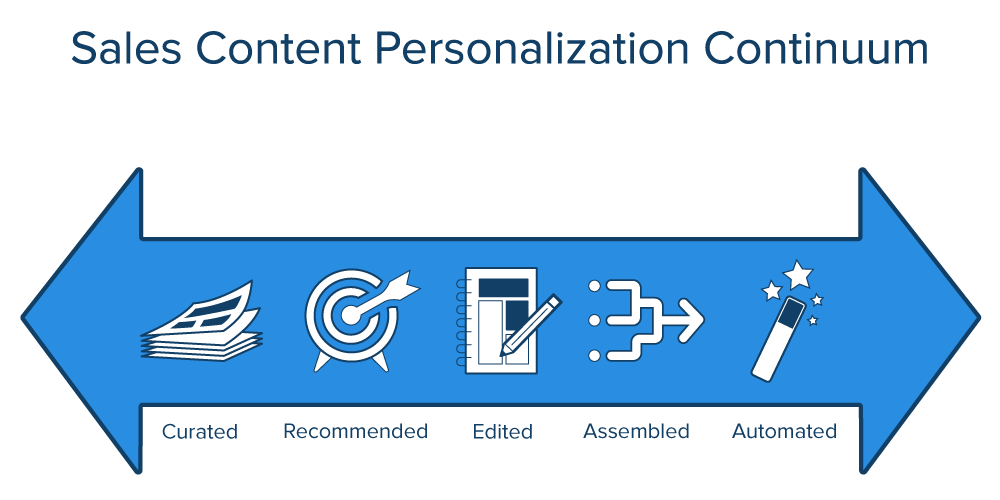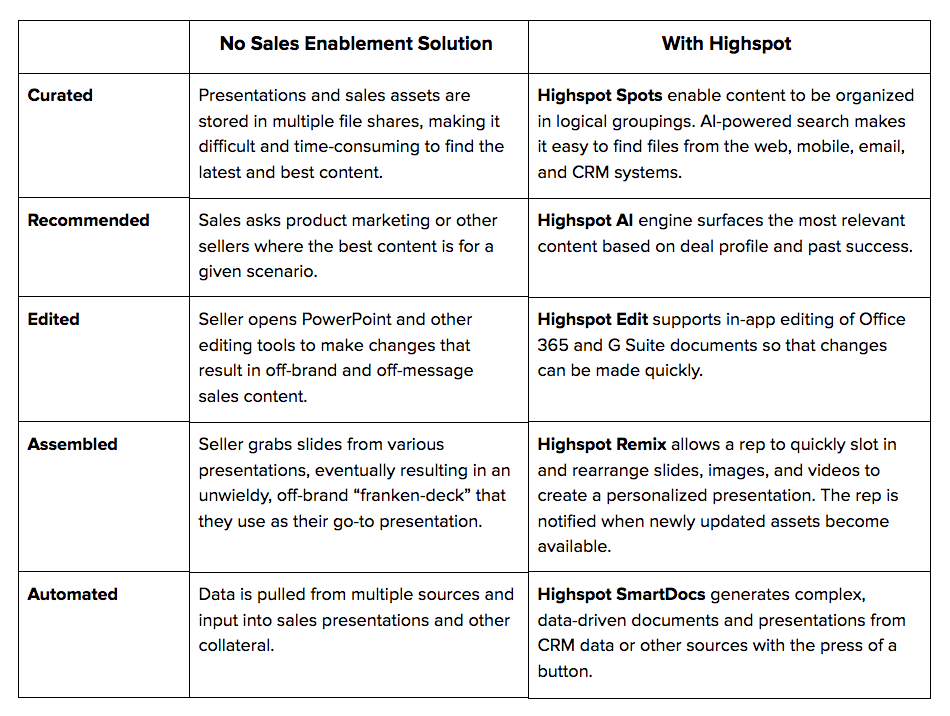In today’s omnichannel, hyper-digital, and buzz-filled world, it’s no surprise that personalized content is the key to breaking through the noise and engaging modern buyers.
The two questions leaders should be asking to unlock standout success are:
- How can we provide sales reps with an intuitive and efficient way to personalize content?
- How can we provide marketers with the visibility and analytics they need to inform their content development efforts?
It’s first important to recognize that different scenarios require different approaches to content personalization, which explains why sellers need the flexibility to adapt content to every unique case.
To illustrate the different levels of personalization, let’s pretend that I’m in the market for a new car. I’ve conducted online searches for top all-wheel-drive models and now start seeing display ads showcasing AWD vehicles. These targeted ads can be considered a form of personalization, especially at this stage in my buyer’s journey. Eventually I decide to take a test-drive at a local dealership. The next week, I receive a handwritten note from the representative I spoke with, mentioning a limited-time offer for AWD vehicles and inviting me to bring my kids along for free hotdogs. This level of personalization is much more detailed and specific, which is appropriate given where I am in my purchase decision and the additional information I have disclosed about myself and my needs.
This example illustrates two very different levels of personalization at opposite ends of a spectrum. We can think of this spectrum as a “Sales Content Personalization Continuum” that breaks down personalization into various levels of specialization:

From left to right, the type of personalization gets more specialized and applies to an increasingly smaller subset of sales assets.
To bring these levels of content personalization to life, imagine how a technology company that sells a wide variety of products might personalize their content:
- Curated: Standard sales presentations for each product line are clearly delineated and organized into separate collections.
- Recommended: Specific sales presentations are recommended based on the type of product, the buyer profile, or the past sales success of specific presentations.
- Edited: Based on a previous needs analysis, information is added to a presentation to help validate the stated needs, and specific logos are added or removed from a customer logo slide because those uses cases aren’t relevant.
- Assembled: A prospect is interested in learning more about three of the products, and a tailored presentation is assembled from multiple decks and from different slides within those decks based.
- Automated: A presentation deck is automatically created, with personalized complex charts, tables, and graphs, from existing information about the customer and/or from inputs that the seller provides.
For most companies, the first four types are familiar concepts. The fifth type, automation, may be new territory. Automation relies on the marketing, sales enablement, and sales operations teams building “mini content applications” that gather data from various data sources, such as CRM or external databases, and inserts that data into graphs, charts, and tables. For complex, data-driven documents that follow a rigid template, such as account management quarterly reviews or complex proposals, automation is often the right investment. But for most organizations, the complexity of automation makes it an inefficient and unnecessary choice for the majority of their content.
Ready to choose the level of content personalization that’s best for you? We have good news—Highspot is the only sales enablement platform that provides all five types of personalization, so teams can pick the right technology for every job.
Let’s examine typical approaches to personalization compared to Highspot’s approach:

And it gets even better — Highspot’s Content Genomics uses machine learning to analyze content and track how it evolves from creation to distribution. With this patented technology, marketers can see all permutations of a piece of content down to the slide level, its usage, and impact in driving sales, allowing them to focus efforts on developing higher-return content. On the sales front, teams can track message improvements in real-time and adopt those best practices across the organization. The result: sales and marketing alignment, data-supported learnings, increased productivity, and better content.
Content personalization is nothing unheard of in this day and age, but the option to choose the level of personalization is a new, exciting opportunity that makes a world of difference. With Highspot’s AI-powered technology, personalization can be done at scale with little manual effort and with maximum consistency and efficiency.
To see how Highspot and the content personalization continuum go hand-in-hand, request a demo today.




